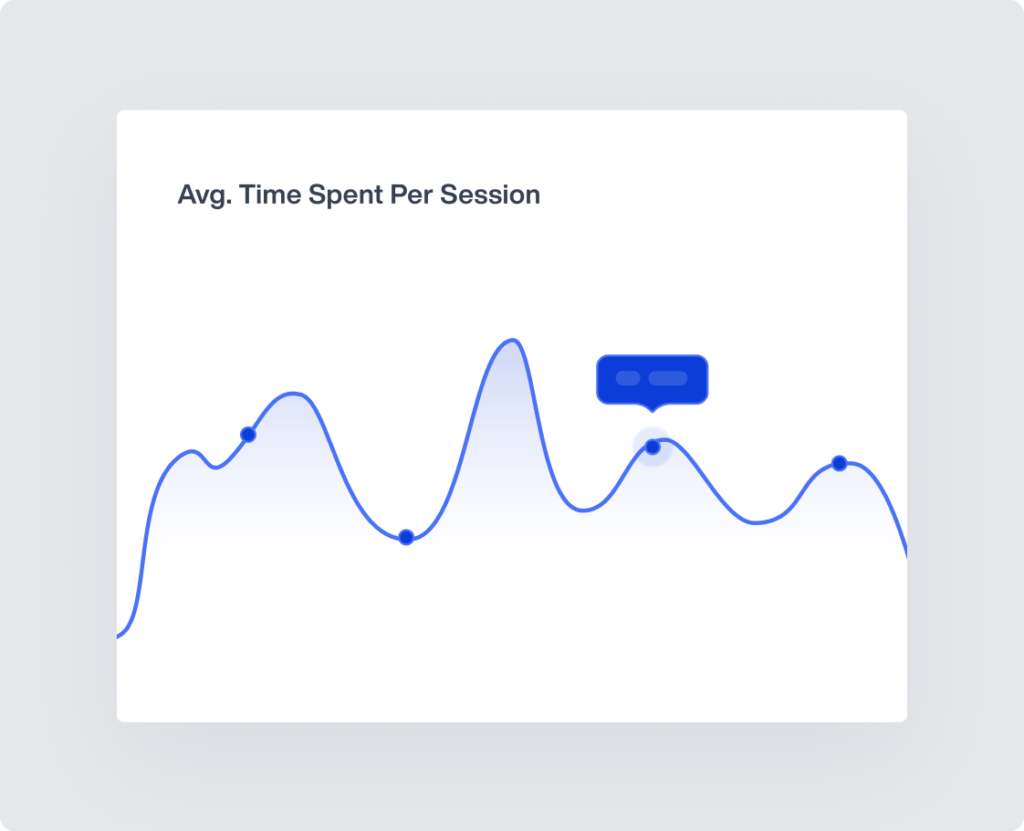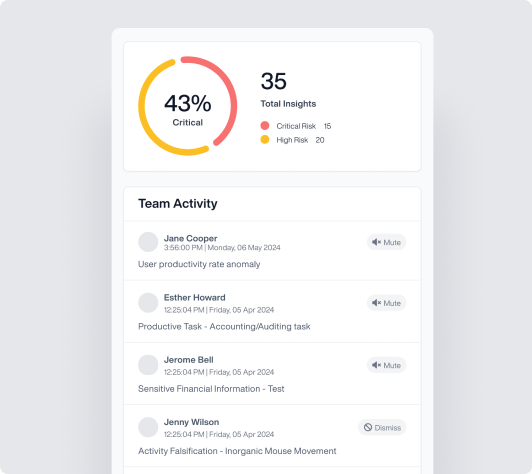Employee Productivity
Analyze & Manage Employee Productivity
Understand your workforce – behaviors, trends, context, and more.

Get proactive about supporting your people
Awareness
What are employees doing with their time?
Improvement
How do we evolve teams and culture?
Prevention
How can we minimize wasted effort or time?
Step 4
Proactivity
How can we build more efficient systems?
Awareness
What are employees doing with their time?
Improvement
How do we evolve teams and culture?
Prevention
How can we minimize wasted effort or time?
Proactivity
How can we build more efficient systems?
Performance Measurement Analytics
Quality over quantity: Place value on what matters most.
A highly engaged workforce is a highly productive workforce.
Enable HR with a platform that speaks human behavior.

Core Teramind features that support workforce productivity
Use OMNI to quickly identify work trends.

What’s working, and
what’s not.

Measure what matters, not what doesn’t.

Is it helping or hurting?

Frequently Answered Questions
Which employee types drive more ROI for department X?
The Teramind platform automates productivity comparisons, funneling data objectivity into the entire employee lifecycle.
How does time spent researching, learning, and upskilling contribute to the quality of an employee’s work?
Teramind automatically identifies key employee behaviors that contribute to achieving more valuable outputs, such as optimal productivity times and fluency within your company’s portfolio of work applications.
Who are our top producers and are we overlooking key employees who might make excellent leaders?
Teramind helps you map and understand employee relationships in the context of team productivity, unveiling hidden leaders and enhancing promotion cycles.
How do HR inputs affect employee productivity rates?
Teramind automatically surfaces insights around employee behavioral changes that may signal risk of resignation, and even measures how time off impacts productivity rates.
How can Teramind help improve team productivity?
Teramind provides insights into how teams work together and identifies areas for improvement. By monitoring communication patterns, collaboration styles, and individual contributions, Teramind can help you optimize workflows, improve communication, and foster a more productive work environment for your teams.
How does Teramind protect employee privacy while monitoring productivity?
Teramind is committed to ethical employee monitoring. Our monitoring solution includes features like customizable privacy settings, data encryption, and role-based access control to ensure that employee privacy is protected while providing valuable insights into productivity. This helps you maintain a respectful and transparent work environment while leveraging the benefits of employee monitoring tools.
How can Teramind help remote workers stay productive and engaged?
Teramind provides tools and features specifically designed for those who work from home, including real-time activity monitoring, productivity tracking, and communication analysis. This helps remote workers stay engaged, focused, and productive, even when working outside a traditional office setting.
Try Platform
With a Live Demo
to see how it works.

What our Customers Say
Larissa H.
IT Support Specialist
Yakir D.
CIO
IT Security & Risk Manager
$7B Manufacturing Enterprise


